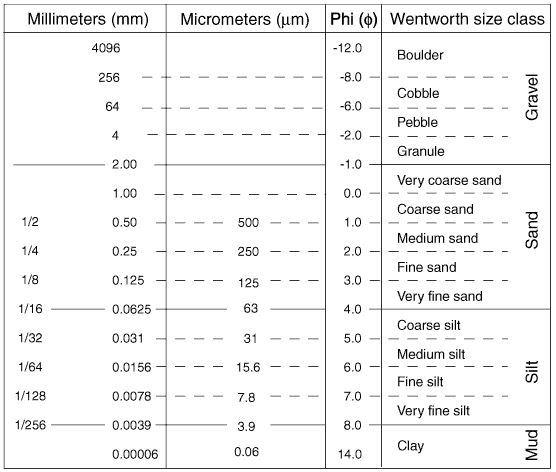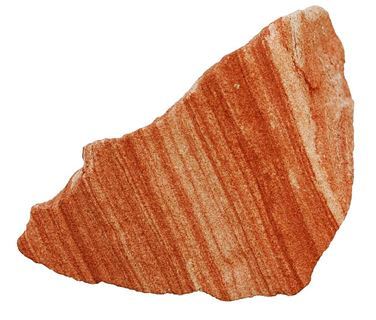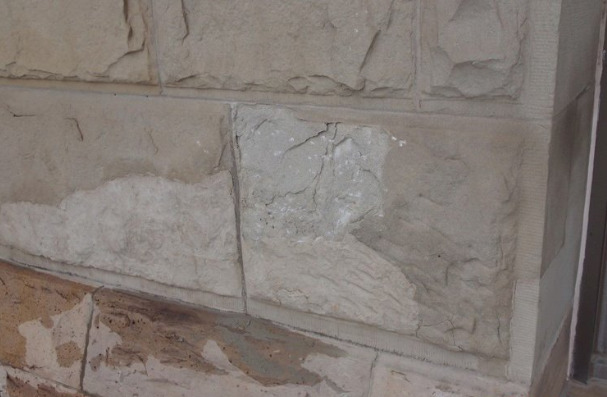A ruler (with millimeters) or other device to measure length and a magnifying glass might be helpful in completing this EarthCache.
This EarthCache will take you Wells County Courthouse in Bluffton, Indiana. There is plenty of parking along the street on the north side of the building. Please respect the area.
To log this EarthCache, post your log here (please no answers to the questions in your log!) and send us a message through geocaching.com with answers to the questions below within three days:
1) Closely examine the grains that make up the stone (a magnifying glass and ruler might help). How would you describe the individual grains in terms of color, shape, size, and variability?
2) Does the predominant color of the sandstone indicate a low or high feldspar content?
3) What other mineral or minerals do you think are present in the sandstone based on the colors you see?
4) What does the shape of the majority of the sand grains indicate about how they were formed?
5) Walk around the building, searching for signs of delamination. Where is it most prevalent, and why do you think this is the case?
6) (Optional) Post a picture of you and/or a personal item with the courthouse in the background (from a far enough distance that detail is not evident).
Wells County Courthouse
The Wells County Courthouse is an historic courthouse located in Bluffton, Indiana, the county seat of Wells County, Indiana. Built in 1889, it is a two-story Richardsonian Romananesque style sandstone building. The building also includes a four-level clock tower and is on the National Register of Historic Places. The plaza was originally an expanse of limestone paving, and this was visually extended into the building through the use of white limestone at the base of the building. Above this base layer is sandstone quarried from Stony Point, Michigan, extending from the base all the way up to the clock tower.
The clock tower is a benchmark, and there is also a benchmark disk located on the northeast corner of the building, which can both be logged if you so desire.
What is Sandstone?
Sandstone is a type of sedimentary rock composed primarily of sand-sized (0.625mm to 2.0mm) grains of mineral, rock, or other organic material. It also contains a material that bands the sand grains together known as a cementing material. The sandstone may contain silt- or clay-sized (less than 0.625mm) particles filling in the spaces between the grains of sand. Typically, quartz makes up the largest percentage of sand grain within sandstone, and the quartz content can be up to 90% or more. Feldspar is also a common component of sandstone. Sandstone may contain larger sized grains, such as granules (2mm to 4mm), but the rock would still be classified as sandstone if the primary component is sand-sized grains.

Chart taken from planetary.org
The grains of sand in sandstone have been reduced to their sand size through weathering, and they are transported and deposited via water, wind, or glacial action. The time and distance these sand grains have traveled will vary. If the sand is deposited near its source, the composition of the sandstone will more closely match the composition of the source rock. On the other hand, if the sand grains have traveled a greater distance, the sandstone will likely have a more varying composition. More rounded grains indicate greater weathering and are an indication that the sand likely traveled a greater distance from its source rock.
Sandstone is found throughout the world and is mined for use in construction or as a material for use in manufacturing. Sandstone can also contain groundwater aquifers or house oil and natural gas.
Color of Sandstone
Sandstone can be highly variable in appearance. It can appear banded, which can occur due to different layers of sand being deposited with different characteristics. If these varying sands are then cemented together, the result is sandstone that is banded, with the different layers appearing very different. Sandstone typically ranges in color from an off white to tan to brown. Pure quartz is very light in color, so lighter colored sandstone would indicate a high quartz content and a low feldspar content. Feldspar has more of a dark amber color, so a greater feldspar content would tend to make the sandstone darker. However, there are some other colors that can appear in sandstone that serve as indications of the presence of different minerals within the sandstone. For example, red, orange, and brown within sandstone indicate the presence of iron. A purple hue indicates the presence of manganese. Green is an indication of glauconite, which commonly occurs in marine sandstone. The different colors seen in sandstone contribute to its uniqueness and help make it an aesthetically pleasing building material.

Image source from sandatlas.org
Weathering of Sandstone
Sandstone is highly compacted, and its formation process involves a significant amount of weathering. As the sand grains that ultimately make up sandstone are transported to their depositional site, the more vulnerable to weathering materials are eliminated, leaving only the sturdier sands, such as quartz and feldspar. Because of this, sandstone tends to be strongly resistant to weathering. This is another factor that makes it a desirable building material. However, while water is important in the formation of sandstone, it can also cause damage. In particular, if the cementing material contains carbonates, the sandstone can be damaged by acid rain. Water and moisture damage can also cause the surface of the stone to split apart and flake off in a process called delamination, as shown below.

Image source from wyomingcapitolsquare.com
